Stabilized collagen matrix dressing improves wound macrophage function and epithelialization
- PMID: 30260708
- PMCID: PMC6338656
- DOI: 10.1096/fj.201800352R
Stabilized collagen matrix dressing improves wound macrophage function and epithelialization
Abstract
Decellularized matrices of biologic tissue have performed well as wound care dressings. Extracellular matrix-based dressings are subject to rapid degradation by excessive protease activity at the wound environment. Stabilized, acellular, equine pericardial collagen matrix (sPCM) wound care dressing is flexible cross-linked proteolytic enzyme degradation resistant. sPCM was structurally characterized utilizing scanning electron and atomic force microscopy. In murine excisional wounds, sPCM was effective in mounting an acute inflammatory response. Postwound inflammation resolved rapidly, as indicated by elevated levels of IL-10, arginase-1, and VEGF, and lowering of IL-1β and TNF-α. sPCM induced antimicrobial proteins S100A9 and β-defensin-1 in keratinocytes. Adherence of Pseudomonas aeruginosa and Staphylococcus aureus on sPCM pre-exposed to host immune cells in vivo was inhibited. Excisional wounds dressed with sPCM showed complete closure at d 14, while control wounds remained open. sPCM accelerated wound re-epithelialization. sPCM not only accelerated wound closure but also improved the quality of healing by increased collagen deposition and maturation. Thus, sPCM is capable of presenting scaffold functionality during the course of wound healing. In addition to inducing endogenous antimicrobial defense systems, the dressing itself has properties that minimize biofilm formation. It mounts robust inflammation, a process that rapidly resolves, making way for wound healing to advance.-El Masry, M. S., Chaffee, S., Das Ghatak, P., Mathew-Steiner, S. S., Das, A., Higuita-Castro, N., Roy, S., Anani, R. A., Sen, C. K. Stabilized collagen matrix dressing improves wound macrophage function and epithelialization.
Keywords: ECM; antimicrobial peptides; biofilm; cytokines; scaffold.
Conflict of interest statement
The authors thank Dr. B. Deng (Center for Electron Microscopy and Analysis College of Engineering, The Ohio State University) for her assistance with light microscopy studies on sPCM. This work was supported by U.S. National Institutes of Health Grants GM077185 and GM069589 (National Institute of General Medical Sciences), NR013898 and NR015676 (National Institute of Nursing Research), and DK076566 (National Institute of Diabetes and Digestive and Kidney Diseases). This work was supported, in part, by an unrestricted gift from Harbor MedTech (Irvine, CA, USA). The authors declare no conflicts of interest.
Figures

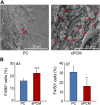
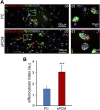

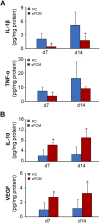
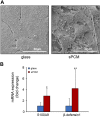

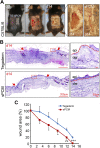
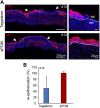
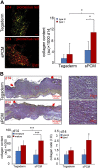
Similar articles
-
Neurotensin-loaded collagen dressings reduce inflammation and improve wound healing in diabetic mice.Biochim Biophys Acta. 2014 Jan;1842(1):32-43. doi: 10.1016/j.bbadis.2013.10.009. Epub 2013 Oct 23. Biochim Biophys Acta. 2014. PMID: 24161538
-
Inhibition of Pseudomonas aeruginosa biofilm formation on wound dressings.Wound Repair Regen. 2015 Nov-Dec;23(6):842-54. doi: 10.1111/wrr.12365. Epub 2015 Nov 4. Wound Repair Regen. 2015. PMID: 26342168 Free PMC article.
-
Novel murine model for delayed wound healing using a biological wound dressing with Pseudomonas aeruginosa biofilms.Microb Pathog. 2018 Sep;122:30-38. doi: 10.1016/j.micpath.2018.05.043. Epub 2018 May 26. Microb Pathog. 2018. PMID: 29842898
-
Fish skin dressing for wound regeneration: A bioactive component review of omega-3 PUFAs, collagen and ECM.Int J Biol Macromol. 2024 Dec;283(Pt 3):137831. doi: 10.1016/j.ijbiomac.2024.137831. Epub 2024 Nov 18. Int J Biol Macromol. 2024. PMID: 39566781 Review.
-
Advanced dressings based on novel biological targets for diabetic wound healing: A review.Eur J Pharmacol. 2025 Jan 15;987:177201. doi: 10.1016/j.ejphar.2024.177201. Epub 2024 Dec 10. Eur J Pharmacol. 2025. PMID: 39667426 Review.
Cited by
-
Composite Membrane Dressings System with Metallic Nanoparticles as an Antibacterial Factor in Wound Healing.Membranes (Basel). 2022 Feb 13;12(2):215. doi: 10.3390/membranes12020215. Membranes (Basel). 2022. PMID: 35207136 Free PMC article. Review.
-
Modulation of Macrophage Function by Bioactive Wound Dressings with an Emphasis on Extracellular Matrix-Based Scaffolds and Nanofibrous Composites.Pharmaceutics. 2023 Feb 28;15(3):794. doi: 10.3390/pharmaceutics15030794. Pharmaceutics. 2023. PMID: 36986655 Free PMC article. Review.
-
Optimizing collagen-based biomaterials for periodontal regeneration: clinical opportunities and challenges.Front Bioeng Biotechnol. 2024 Dec 5;12:1469733. doi: 10.3389/fbioe.2024.1469733. eCollection 2024. Front Bioeng Biotechnol. 2024. PMID: 39703793 Free PMC article. Review.
-
Cultured Chinese Giant Salamander Skin and Skin Secretions as a Source of Bioactive Peptides for Food and Medicine.Food Sci Anim Resour. 2025 Jan;45(1):109-125. doi: 10.5851/kosfa.2024.e114. Epub 2025 Jan 1. Food Sci Anim Resour. 2025. PMID: 39840243 Free PMC article. Review.
-
A Modified Collagen Dressing Induces Transition of Inflammatory to Reparative Phenotype of Wound Macrophages.Sci Rep. 2019 Oct 4;9(1):14293. doi: 10.1038/s41598-019-49435-z. Sci Rep. 2019. PMID: 31586077 Free PMC article.
References
Publication types
MeSH terms
Substances
Grants and funding
LinkOut - more resources
Full Text Sources
Other Literature Sources
Research Materials
Miscellaneous

